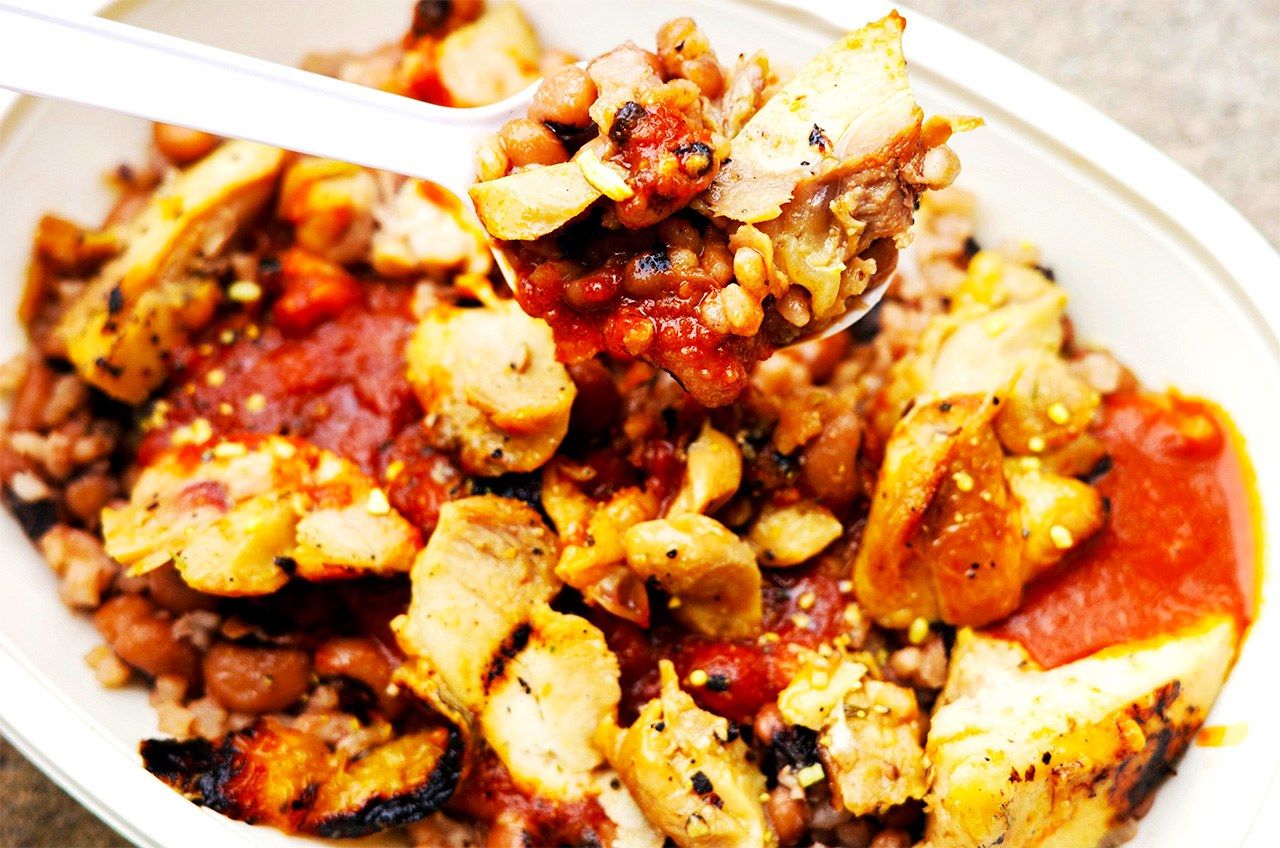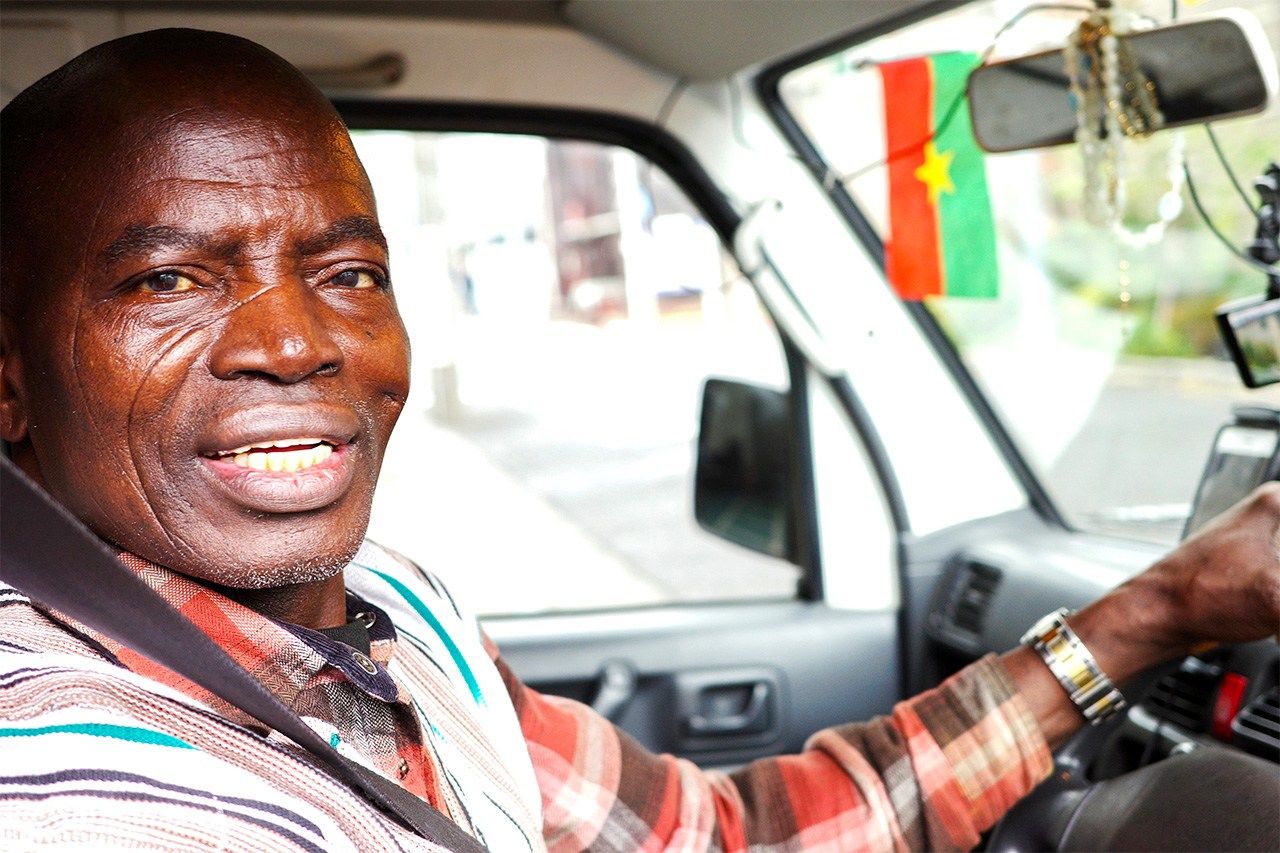
Fofo: Food Truck Bringing Flavors of Burkina Faso to Tokyo Area
Food and Drink World- English
- 日本語
- 简体字
- 繁體字
- Français
- Español
- العربية
- Русский
Food Truck from the “Land of the Honest People”
Food trucks have enjoyed something of a boom in Japan recently. The mobile restaurants can be spotted in busy business districts and elsewhere serving up Japanese street food as well as Vietnamese, Thai, and other Southeast Asian fare. Sporting the national colors of Burkina Faso, Fofo is a unique addition to the mix as the only food truck offering the authentic flavors of West Africa. Operating mainly in Tokyo’s Shinagawa and Kawasaki in neighboring Kanagawa Prefecture, it also makes appearances at special events and can be tracked down on social media platforms X, Facebook, and Instagram.
Burkina Faso, a landlocked country in West Africa whose name means “Land of the Honest People,” has a low profile in Japan. My limited awareness of the country owes to reporting on soccer for many years and mainly concerns Wilfried Sanou, a Burkina Faso-born player who spent time at J. League sides Urawa Reds and Sanfrecce Hiroshima more than a decade ago.
Fofo proprietor Emile Ilboudo tends the eye-catching food truck. I am curious as to what brought him to Japan, but before delving into his story, it is time to try his cooking.
The truck is adorned with photos of the menu—a selection of dishes from West Africa, and in particular, Burkina Faso. As it is my first time to see most of the foods, choosing what to eat is a tough decision. Seeing my uncertainty, Emile recommends that I try benga, a simple dish made by mixing black-eyed beans into brown rice.
Emile piles up a plate with the bean-and-rice concoction, which he tops with freshly chopped bits of aromatic roast chicken. The finishing touch is dallop of bright red chili sauce on the side.

Benga, which means “beans,” is served Burkina Faso-style. (© Kumazaki Takashi)
It does not seem so exotic to me, tasting surprisingly similar to a Japanese beans and rice-based dish mamegohan. The crisp texture of the beans pairs well with the brown rice, and the juicy chicken keeps my spoon moving. I mix in the chili sauce a little at a time and feel a warmth spread throughout my body.
“Burkina Faso cuisine features many bean dishes, including benga,” Emile explains in fluent Japanese as I gobble down my food. “It’s a standard dish at food stalls and at home—for me, it’s the taste of my mother’s cooking. When I was a child, she’d make benga to be shared among my siblings. Because it’s made with brown rice, it’s very nutritious—and there are no artificial additives. We cook it using only water and salt, so it’s very healthy.”

Emile driving his food truck. He has lived in Japan for nearly 30 years. (© Kumazaki Takashi)
Cooking Across Borders
“I was born in 1959, when my country was still a French colony,” recounts Emile. “The next year, we gained independence, becoming the Republic of Upper Volta. In 1984, the country’s name was changed to Burkina Faso.”
Born into a well-off family, Emile, influenced by his mother’s prowess in the kitchen and his fascination with the tall hats worn by French chefs, he aspired to become a cook. With his parents’ encouragement, at the age of 17 he entered a cooking school in neighboring Côte d’Ivoire.
To Japanese, the idea of moving to another country at such a young age is surprising, but is not uncommon in Africa. To begin with, the borders of many African countries were drawn by European colonial powers with little concern for local circumstances. Subsequently, cross-border family relations and trade are commonplace.
Emile studied at a school in the city of Abidjan in Côte d’Ivoire. “At the time, it was one of Africa’s preeminent metropolises,” he explains. “It attracted people from surrounding countries and had a fusion of diverse cultures. I played the guitar and formed a band with other musicians, locals and those from Cameroon.” He describes life in the city as a celebration of youth. “It was a lot of fun.”
Emile poured his heart into cooking, earning top marks in his class. It opened the door to a wider world for him. Later, he trained in Morocco, and then in France. During six years in Paris and Marseilles, he mastered French cuisine before officially graduating from cooking school.
Returning to Côte d’Ivoire, he began working as a chef at a hotel. During that time, he cooked at a party for the country’s president, which led to his becoming the president’s chef. When his position ended with the president’s death, he received numerous offers to work abroad, jumping at the chance to work in Japan.
“I was quite familiar with countries in Africa and Europe but knew almost nothing about Asia,” he says. His one small connection with Japan came from the Japanese motorbike that he owned.
Moving to the Land of Manufacturing
“Bikes from other countries broke easily, but my Japanese bike never did,” Emile proclaims. “My impression of Japan was as a country that made good products, which was the reason I wanted to come here.”
Emile took moving halfway around the world in stride. After arriving in Japan in 1996, he worked as a chef at the Ivory Coast, Guinea, and then Burkina Faso embassies. In 2004, he opened his own African restaurant, Calabash, near Hamamatsuchō Station on Tokyo’s JR Yamanote line.
Calabash drew a steady stream of customers, and Emile was run off his feet each day. But it also gave him a new idea: opening a food truck. “There was a lack of awareness of Burkina Faso,” he says. “I hoped to let people know about my country, and a food truck seemed like a good way to do that. I could paint the van in the colors of our national flag and take it wherever I pleased.”

Fofo draws a line of hungry customers. (© Kumazaki Takashi)
In 2014, he launched his food truck Fofo, which he painted himself, and began traversing the streets of Tokyo. The day that I visited, there was a long line outside the truck, and Emile was enjoying chatting with his customers.
Since starting the venture, Emile has also become deeply involved in charity work. “I have a strong respect for my grandfather, who taught me to serve others,” he declares. “In the beginning, every time I saved up 100,000 yen, I’d wire it back home. My aim was to open a school for underprivileged children and youth.”
After two years, Emile achieved his goal and is now working toward opening a second school.
He says that the food truck has allowed him to gradually spread awareness of Burkina Faso. He has also had opportunities to talk about Africa at Japanese schools and recalls happily how after one such occasion children took to calling him “Mister Burkina Faso.”
Today, Emile still drives his food truck about town, delivering his warm smile and hot food from Burkina Faso.

Fofo Catering Service, specializing in Burkina Faso and African cuisine. (© Kumazaki Takashi)
(Originally published in Japanese. Banner photo: Emile with his food truck, sporting the bright colors of Burkina Faso’s flag. © Kumazaki Takashi.)